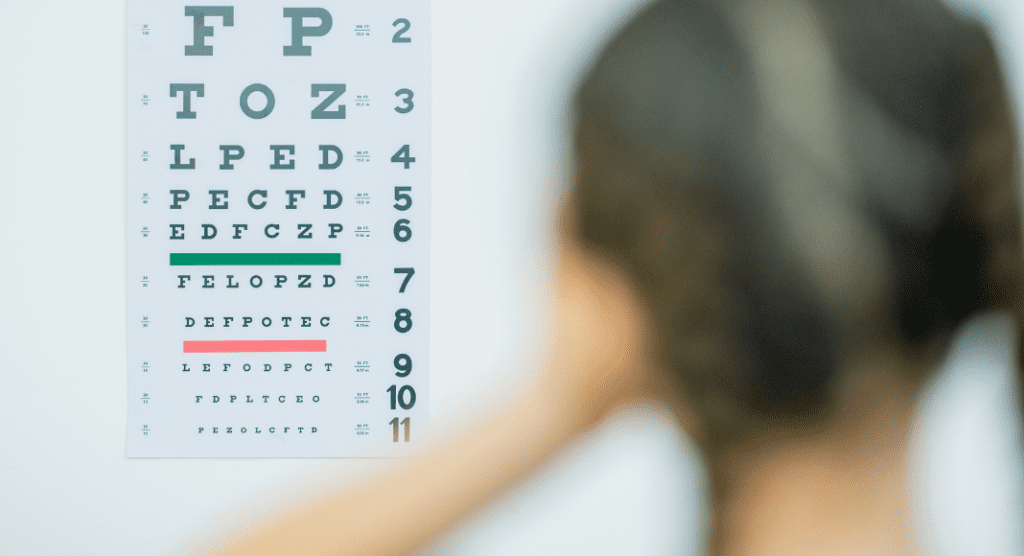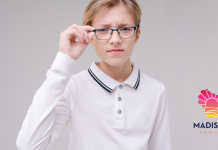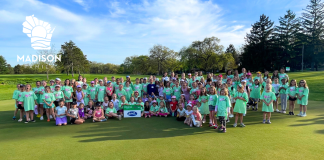You may not be familiar with the medical term amblyopia, but the condition affects somewhere around 2 to 4 percent of children. What’s especially concerning about amblyopia, or “lazy eye,” as it’s more commonly called, is that it can be difficult to diagnose.
Unfortunately, that can lead to a child struggling with schoolwork, while the undiagnosed vision problem continues to baffle parents, teachers, and even healthcare professionals.
But it doesn’t have to be that way. Below, I’ll explain important information that parents should know about amblyopia, including its causes, symptoms, and treatment.
 Amblyopia 101: The Basics on Lazy Eye
Amblyopia 101: The Basics on Lazy Eye
Amblyopia is when one eye sees more clearly than the other, even with the help of corrective lenses. Note that the amblyopic eye itself is likely healthy and physically capable of normal vision.
The problem is really with the visual system – the eyes, the brain, the visual pathways – and how its components work together.
More specifically, with amblyopia the brain is preventing the amblyopic eye from functioning properly, which affects binocular, or two-eyed, vision.
Amblyopia and binocular vision
With normal binocular vision, the eyes send two slightly different images to the brain, which combines them into one three-dimensional image. (In less frequent cases, amblyopia can affect both eyes.)
Amblyopia can emerge when binocular vision doesn’t function correctly. Possible causes include strabismus (sometimes called “crossed eyes”) or anisometropia, which is when there’s a large difference in eyewear prescription between the two eyes.
Poor binocular vision can lead to double vision, which in turn will cause the brain to suppress the signal from one of the eyes.
When the suppression occurs consistently over a long enough period of time, the affected eye’s vision will become poor and is now considered the amblyopic (or “lazy”) eye.
A note on the phrase “lazy eye”
What does a lazy eye look like? Unfortunately, simple observation alone is usually not enough to detect amblyopia. In fact, the term “lazy eye” inaccurately suggests that the eye doesn’t move, or appears to do what it wants, or is visibly “lazy” in some other way.
But that’s generally not the case.
Unlike the aforementioned strabismus, or “crossed eyes,” in which an eye may be visibly turned in, out, up, or down, amblyopia can’t be diagnosed by an eye’s appearance. While a person can have amblyopia as a result of strabismus, not all cases of amblyopia involve strabismus.
On top of that, it’s possible for a child to have 20/20 vision and also have amblyopia.
For reasons like these, amblyopia can be difficult for parents and others to detect. That said, there are a handful of indicators. Let’s take a closer look at possible symptoms.
Amblyopia symptoms
Amblyopia often begins in infancy and can be challenging to identify outside of a comprehensive Functional Vision Exam (see more on that in the diagnosis section below).
To complicate matters, children with amblyopia may not even realize their vision is functioning abnormally because they have no frame of reference to judge their vision against.
Parents can, however, be alert for potential symptoms like the following:
Trouble with depth perception
Since amblyopia prevents or greatly impairs binocular depth perception, children with the condition can:
- Have pronounced difficulty catching objects
- Seem clumsy and frequently bump into objects, walls, and other people
- Misjudge the proximity of another person when conversing
Sure, children are clumsy as they’re growing into their bodies, but keep an eye out for clumsiness beyond the norm. And if your child is resistant to playing catch, usually a natural source of fun for kids, then amblyopia could be the culprit.
Trouble with schoolwork
Amblyopia and reading difficulties in particular can go hand in hand. The condition can affect children’s school performance and cause them to:
- Struggle when identifying letters and learning to read
- Read more slowly than normal
- Have delayed focus when looking up at the board
The silver lining in amblyopia: How diagnosis can be easy
I’ve suggested how difficult amblyopia can be to diagnose. But that’s only partially true.
Amblyopia can actually be easily detected with a Functional Vision Exam. That’s why it’s so important for children to have this type of exam from the first year of life onward.
Note that a Functional Vision Exam goes beyond a basic school vision screening or a typical optometric vision exam. It includes comprehensive assessment of visual information processing, binocular function, and other visual skills.
If a child is not seen and tested regularly by an eye doctor, it’s possible that they can go for years before anyone detects amblyopia. Remember, children with amblyopia can’t necessarily report their own symptoms. They assume everyone sees the world as they do, even though amblyopia may be causing their two eyes to see very differently.
Special note on the misinformation surrounding amblyopia
If you’ve already been told that your child has amblyopia, or “lazy eye,” then you may have also been told there’s no effective treatment for lazy eye in children older than around eight years old.
But that’s simply not true. Furthermore, adults with amblyopia can also be treated.
The notion that older children and adults can’t be treated is based on a long-held but incorrect belief about the “critical period” of vision development, which was thought to end around age 7 or 8.
Since it’s rare for amblyopia to develop in a child over the age of eight, over the years many doctors have assumed that the brain’s ability to change with respect to visual acuity is limited beyond this age.
However, recent research, as well as years of proven success among vision therapy patients, has shown that assumption to be wrong. (For related information, see Can Adults Be Treated for Lazy Eye?)
Treatment for amblyopia
Every case of amblyopia is different, and a Functional Vision Exam should be administered to determine the extent of the vision problem. That said, developmental optometrists can generally treat amblyopia successfully with the following approach.
Establishing the correct prescription lenses
It’s important that we make sure a child has the right eyewear prescription. In addition to helping him or her see more clearly, lenses also change where things appear to be in space.
We not only want to prescribe glasses that help a child see more clearly but also encourage normal binocular vision through a proper prescription.
Using patching strategically
A common approach to treating lazy eye is to get the amblyopic eye working again by patching, or covering, the other eye for a certain number of hours per day. However, success from patching may be short-lived.
The amblyopic eye may eventually see clearly, but that doesn’t guarantee that the eyes are going to start working in tandem when the patch is removed.
For that to truly happen, the visual system must be retrained to establish efficient binocular vision. Positive long-term gains are far more likely when patching is combined with in-office optometric vision therapy.
Retraining the visual system through optometric vision therapy
Under the direction of a developmental optometrist, an amblyopia patient will undergo optometric vision therapy, which involves using special lenses and other visual devices, as well as specific visual exercises.
Although the duration can vary, a typical program of optometric vision therapy lasts from six to nine months. After that, the amblyopia should be corrected, or, at the very least, the condition should be greatly improved.
See What is Vision Therapy? to learn more.
A Vision Quiz Can Be the First Step Toward Identifying the Problem
If you recognize your child in any of the symptoms described above or have concerns about your child’s vision, I strongly recommend you take The Vision Therapy Center’s free online Vision Quiz.
If your child does have amblyopia or any other functional vision problems, there’s good news: Optometric vision therapy has proven to be highly effective at solving a wide range of functional vision problems.
Click here to take the Vision Quiz.
About the author: Dr. Kellye Knueppel is an award-winning developmental optometrist specializing in vision related learning problems, sports vision, and rehabilitative optometry. She is board certified in vision development as a Fellow of the College of Optometrists in Vision Development. Since opening The Vision Therapy Center in 1995, she has dedicated herself to helping people overcome their visual problems.












